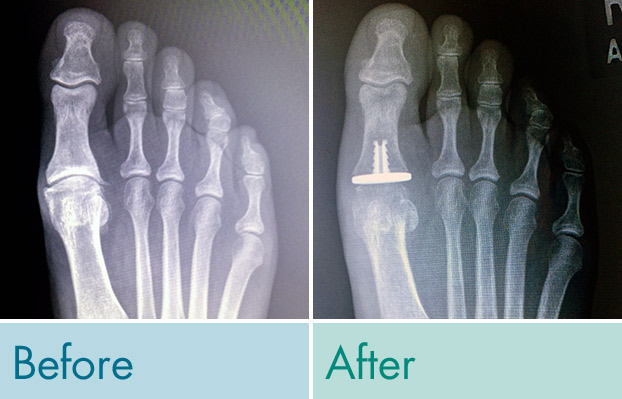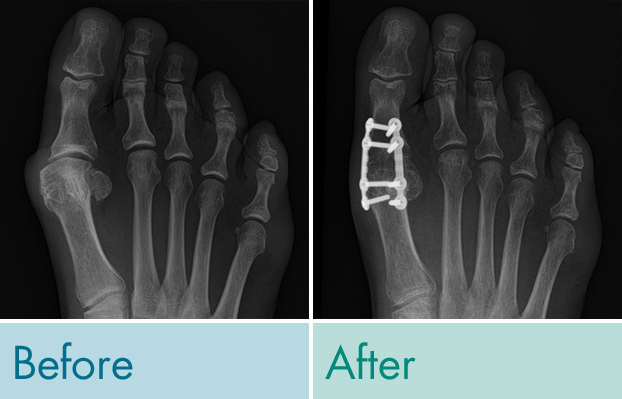
Great Toe Arthritis
The Condition
Hallux limitus/rigidus are terms used to describe degenerative arthritis of the great toe joint. Patients affected by these incapacitating conditions typically complain of stiffness, joint locking and pain.
The Treatment
Early detection, evaluation and treatment can lead to better results and more successful outcomes. Several conservative and surgical options are available to help manage these conditions. Symptomatic relief can be provided through the administration of oral anti-inflammatory medications as well as through the use of injectable forms. These medications can provide temporary relief of pain and discomfort. They can help to reduce inflammation and swelling and can be administered on an as-needed basis. Custom-made foot orthotics can also be fabricated to reduce joint motion and slow deformity progression.


